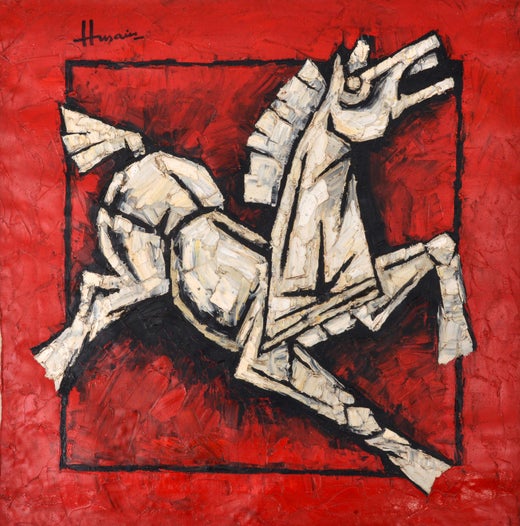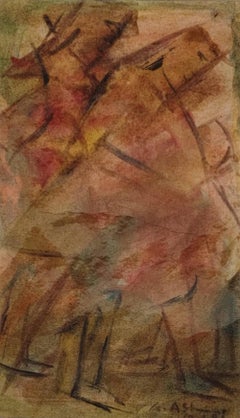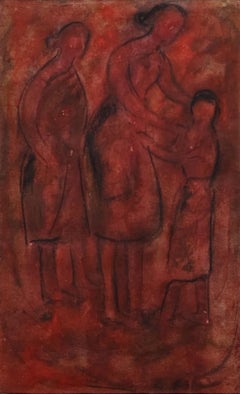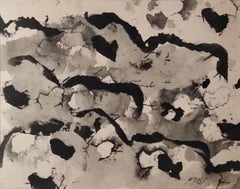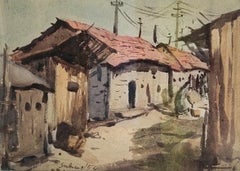M.F. HusainUntitled, Watercolour on Paper, by Modern Artist M.F Husain "In Stock"
About the Item
- Creator:M.F. Husain (1915 - 2011, Indian)
- Dimensions:Height: 14 in (35.56 cm)Width: 10 in (25.4 cm)
- Medium:
- Movement & Style:
- Period:
- Condition:
- Gallery Location:Kolkata, IN
- Reference Number:1stDibs: LU604316076102
M.F. Husain
M.F. Husain was born in Pandharpur, Maharashtra to a Sulaymani Bohra family who traces their roots back to Gujarat within the last 200 years, and then originally to Yemen. Husain completed his art studies from Sir J.J. School of Art. His first serious work was exhibited by the Bombay Art Society in 1947, where he was invited to join five other painters in founding the Progressive Artists Group. Husain, who became known as the “Picasso of India,” created works that could be caustic and funny as well as serious and sombre. His themes—usually treated in series—included topics as diverse as Mohandas K. Gandhi, Mother Teresa, the Ramayana, the Mahabharata, the British Raj and motifs of Indian urban and rural life. M.F. Husain’s best known and the most controversial work is ‘Bharat Mata’ (Mother India) in which he portrays India as a red-colored nude woman with her arms and legs contorted into the shape of the Indian subcontinent. The painting led to an uproar of protests from organizations like Vishva Hindu Parishad (VHP) and was later sold for Rs 80 lakh in an auction. He also made ‘Gaja Gamini’ and ‘Meenaxi: A Tale of Three Cities’. The latter was screened and appreciated at the 2004 Cannes Film Festival. Husain, a secular Muslim, triggered criticism for his often irreverent treatment of the sensitive subject matter, including Hindu goddesses painted as nudes. Other significant works include Man (1951), Vishwamitra (1973), and Passage Through Human Space, a series of 45 watercolours completed in the mid-1970s.
You May Also Like
1940s American Modern Portrait Paintings
Ink, Watercolor, Gouache, Archival Paper
1930s American Modern Landscape Paintings
Archival Paper, Watercolor
Late 20th Century Modern Figurative Paintings
Paper, Gouache
Late 20th Century Modern Figurative Paintings
Paper, Gouache
Late 20th Century Modern Figurative Paintings
Paper, India Ink, Watercolor, Color Pencil
1980s Modern Figurative Paintings
Paper, Gouache
1980s Modern Figurative Paintings
Paper, Gouache
1980s American Modern Figurative Paintings
Paper, Watercolor
1980s Modern Figurative Paintings
Paper, Acrylic, Watercolor
1970s Modern Figurative Paintings
Paper, Gouache
More From This Seller
View All1980s Modern Figurative Paintings
Paper, Gouache
1980s Modern Figurative Paintings
Paper, Gouache
2010s Modern Figurative Paintings
Paper, Gouache, Handmade Paper
1950s Modern Figurative Paintings
Paper, Watercolor
1980s Modern Figurative Paintings
Paper, Watercolor
2010s Modern Figurative Paintings
Paper, Gouache, Handmade Paper
